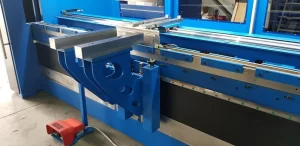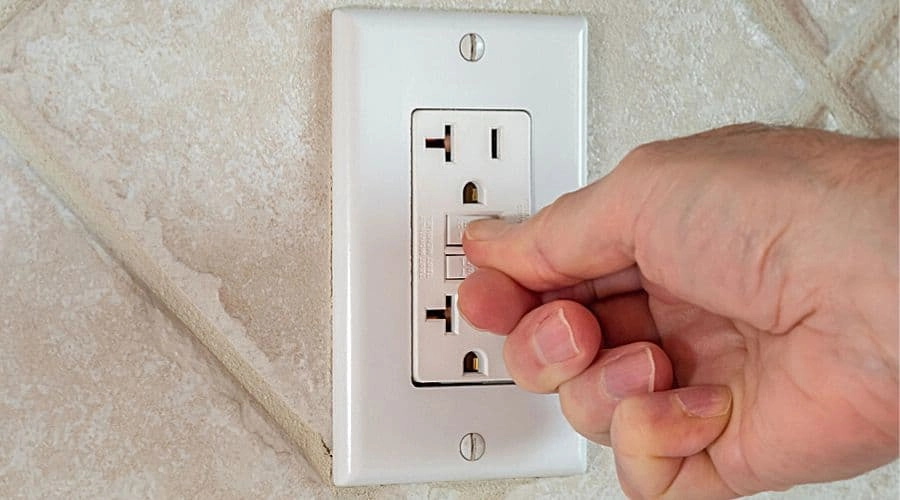Electric press brakes revolutionize industrial businesses, boosting productivity and efficiency. This article explores the concept of electric press brake efficiency and its transformative impact. By highlighting the advantages of these machines, we delve into how they streamline operations, enhance accuracy, and minimize downtime.
Additionally, we emphasize the speed, flexibility, cost-effectiveness, and sustainability that electric press brakes bring to production processes. It’s clear that these innovative machines are indispensable assets for businesses striving to remain competitive in today’s fast-paced market.
Join us as we uncover how electric press brakes reshape industrial business productivity.
Key Takeaways
- Electric press brakes offer precise control over bending operations, resulting in accurate and consistent results.
- They have faster cycle times compared to hydraulic systems, leading to higher production rates.
- Electric press brakes are more energy-efficient and environmentally friendly, consuming less power and producing less noise and vibration.
- They require less maintenance and have a longer lifespan compared to hydraulic press brakes, resulting in improved productivity, cost savings, and enhanced product quality.
Benefits of Electric Press Brake Efficiency
Electric press brakes offer several benefits that contribute to increased productivity and efficiency in the manufacturing process. Firstly, electric press brakes provide precise control over the bending operation, ensuring accurate and consistent results. This eliminates the need for manual adjustments and reduces the risk of human error.
Secondly, electric press brakes have faster cycle times compared to hydraulic systems, resulting in higher production rates. Additionally, electric press brakes are more energy-efficient and environmentally friendly, as they consume less power and produce less noise and vibration.
Lastly, electric press brakes require less maintenance and have a longer lifespan compared to hydraulic press brakes. Overall, the utilization of electric press brake efficiency in the industrial business sector leads to improved productivity, cost savings, and enhanced product quality.
Factors Affecting Electric Press Brake Efficiency
Factors affecting the efficiency of electric press brakes can significantly impact the productivity and performance of industrial businesses. To ensure optimal efficiency, it is important to consider the following factors:
- Machine Design and Construction:
- The design and construction of the electric press brake play a crucial role in its efficiency.
- Factors such as frame stiffness, ram alignment, and overall rigidity can affect the accuracy and repeatability of the machine.
- Control System:
- The control system of the electric press brake controls various parameters such as bending speed, stroke length, and back gauge position.
- A well-designed control system with advanced features can enhance the efficiency of the machine.
- Tooling Selection:
- The selection of appropriate tooling is essential for achieving efficient bending operations.
- Factors such as tool material, size, and geometry should be considered to ensure optimal performance and minimize downtime.
- Operator Skill and Training:
- The skill and training of the operator can greatly impact the efficiency of the electric press brake.
- Proper training and understanding of the machine’s capabilities and operation can improve productivity and reduce errors.
Improving Electric Press Brake Efficiency in Industrial Businesses
To enhance the efficiency of electric press brakes in industrial businesses, implementing optimization strategies is crucial. These strategies aim to streamline the production process, reduce downtime, and increase overall productivity.
One approach to improving efficiency is through the use of advanced control systems. These systems enable precise and automated adjustments, minimizing human error and ensuring consistent results.

Additionally, investing in regular maintenance and servicing of the press brakes is essential to keep them in optimal working condition. This includes routine inspections, lubrication, and calibration to prevent any potential issues that could hinder performance.
Furthermore, providing comprehensive training to operators on the proper use and maintenance of electric press brakes can significantly improve efficiency, ensuring that they are utilized to their fullest potential.
Case Studies: How Electric Press Brake Reshaped Business Productivity
Several case studies have demonstrated the transformative impact of electric press brakes on business productivity. The adoption of electric press brakes has revolutionized the way industrial businesses operate, leading to increased efficiency, accuracy, and overall productivity.
Here are four examples of how electric press brakes have reshaped business productivity:
- Reduced setup time: Electric press brakes offer quick and easy setup, eliminating the need for time-consuming manual adjustments. This streamlined process allows operators to start production faster and significantly reduces downtime between jobs.
- Enhanced precision: Electric press brakes provide precise control over bending processes, resulting in higher quality and consistent products. This level of accuracy minimizes errors and rework, ultimately saving time and resources.
- Improved speed: With advanced automation and faster cycling times, electric press brakes enable businesses to complete bending tasks at a faster rate. This increased speed translates into higher production volumes and shorter lead times.
- Simplified operation: Electric press brakes are user-friendly and require minimal operator training. This simplicity enhances employee productivity as they can quickly learn and adapt to the equipment, reducing the learning curve and maximizing efficiency.
These case studies highlight the significant impact that electric press brakes have on business productivity, making them an essential investment for industrial businesses looking to optimize their operations.
Future Trends in Electric Press Brake Efficiency
One key aspect to consider when exploring the future trends in electric press brake efficiency is the continuous advancement of automation technology.
With the rapid development of artificial intelligence and machine learning, electric press brakes are becoming more intelligent and efficient. These advancements enable the machines to automatically adjust settings, optimize bending sequences, and reduce setup times.
Additionally, the integration of sensors and real-time monitoring systems allows for better process control and predictive maintenance, minimizing downtime and maximizing productivity.
Furthermore, ongoing research and development in material science and engineering are leading to the development of stronger and lighter materials, which in turn improve the performance and energy efficiency of electric press brakes.
As technology continues to evolve, we can expect further improvements in the efficiency and capabilities of electric press brakes, revolutionizing industrial business productivity.
Frequently Asked Questions
What Are Some Common Benefits of Using an Electric Press Brake for Increased Efficiency?
Using an electric press brake can provide several benefits for increased efficiency in industrial businesses. These include faster setup times, improved precision and accuracy, reduced maintenance requirements, and enhanced safety features for operators.
What Factors Can Impact the Efficiency of an Electric Press Brake?
Factors that can impact the efficiency of an electric press brake include the type and condition of the material being worked on, the accuracy and precision of the machine’s programming, and the skill level of the operator.
How Can Industrial Businesses Improve the Efficiency of Their Electric Press Brakes?
To improve the efficiency of their electric press brakes, industrial businesses can implement measures such as regular maintenance, optimizing tooling setups, utilizing advanced control systems, and investing in employee training for proper operation and programming techniques.
Are There Any Real-Life Case Studies That Demonstrate How Electric Press Brakes Have Improved Business Productivity?
Real-life case studies have demonstrated the positive impact of electric press brakes on business productivity. These studies showcase how the efficiency and precision of electric press brakes have improved production processes and ultimately increased overall productivity in industrial businesses.
What Future Trends Can We Expect to See in the Realm of Electric Press Brake Efficiency?
In the realm of electric press brake efficiency, future trends are expected to focus on advancements in automation, precision, and energy-saving technologies. These developments aim to further enhance productivity and streamline industrial processes.
Conclusion
In conclusion, electric press brakes offer numerous benefits for industrial businesses in terms of efficiency, accuracy, speed, and flexibility. By streamlining operations and reducing downtime, these machines revolutionize productivity in the manufacturing sector.
Additionally, electric press brakes are cost-effective and sustainable, making them an attractive option for businesses seeking to improve their bottom line while minimizing their environmental impact.
As the market continues to evolve, electric press brakes are poised to play a crucial role in maintaining competitiveness in the fast-paced industrial landscape.
You May Also Like:



